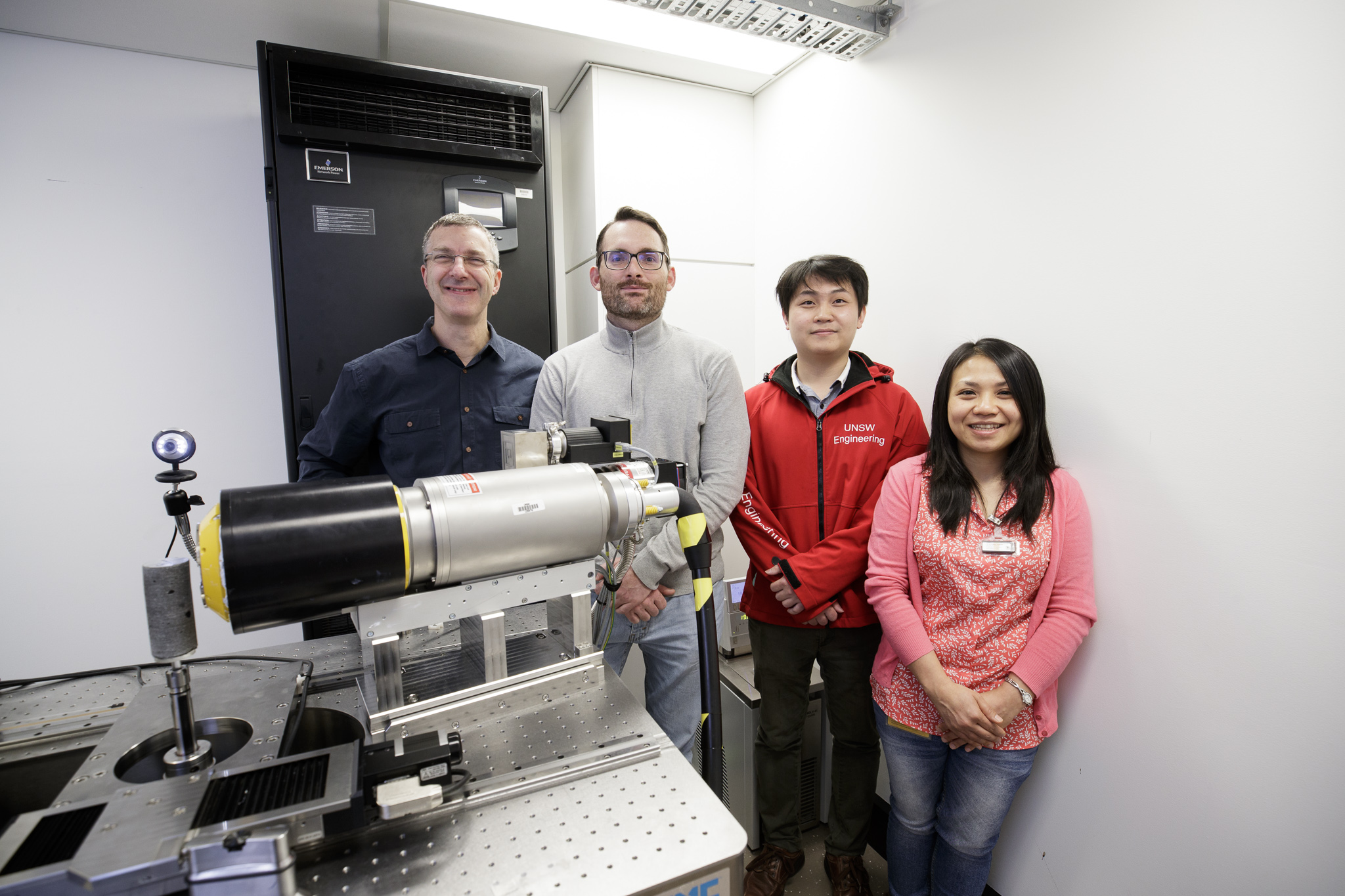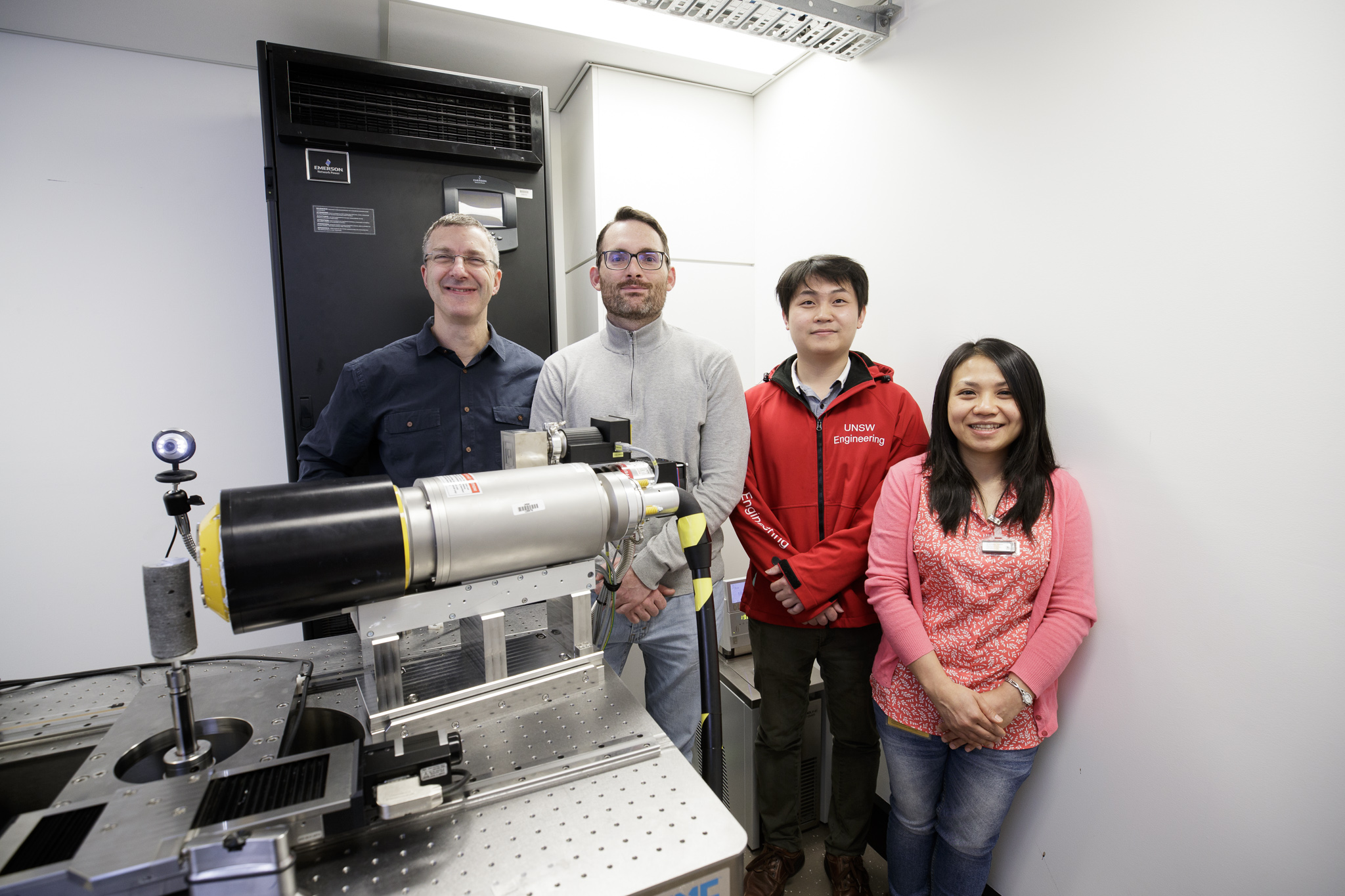
Professor Ryan T. Armstrong has been awarded by the ARC a Future Fellowship for 2021 for his project that will vastly improve multiphase models for subsurface technologies.

UNSW Associate Professor Ryan T. Armstrong has been awarded $1.065 million for his project that will transform the current modelling techniques with outcomes ready for industry application. Photo: Ryan (second from left) is pictured with colleagues from the school and the micro-CT.
Dr. Ryan T. Armstrong, an Associate Professor at the School of Minerals and Energy Resources Engineering has been awarded over $1 million by the Australian Research Council (ARC) Future Fellowships for 2021. The award is for his project “An advanced multiphase model for geometrical evolution and anomalous flows’ which aims to redefine current multiphase models that are used for subsurface reservoir modelling and conceive a breakthrough in order to capture a variety of commonly occurring flow regimes.
This will take place over a four-year fellowship and will provide new insights into the way that energy resources in Australia are utilised for energy security and environmental stewardship. The project will update the current inadequate multiphase model, through the production of a diverse set of experimental and simulation data that will be used in machine learning networks.
Dr. Armstrong has always had a strong interest in multiphase flow as he specialises in subsurface engineering using micro-fluidic devices and X-ray microtomography experiments to study pore-scale physics. He has participated in several research projects, such as with Shell Global Solutions and Schlumberger Moscow research, to assess pore-scaling modelling tools for digital core analysis. He is a professional member of the International Society of Porous Media among others and has won various awards for his collaborative papers.
"The scientific advancements gained will be transferable to technologies necessary for energy security and storage, resource extraction, and greenhouse gas storage, " Dr. Armstrong said.
This will provide many benefits to industries that utilise reservoir modelling, such as recovery of transition fuels and groundwater remediation, using technologies developed from the research outcomes. These technologies are a key research priority that will improve the Australian economy through applications, such as the storage of CO2 in the oil and gas industry that currently spends millions on reservoir modelling.
“I would like to give a special thanks to Peyman Mostaghimi, Christoph Arns, Klaus Regenauer-Lieb , and Denis O’Carroll for reviewing my application. Their feedback helped me in crafting a well-rounded application,” he said.
The project will ensure that the technological advancements created will be market ready for industry application.
Find out more about Dr. Ryan T. Armstrong and his publications within earth sciences, petroleum and reservoir engineering .
